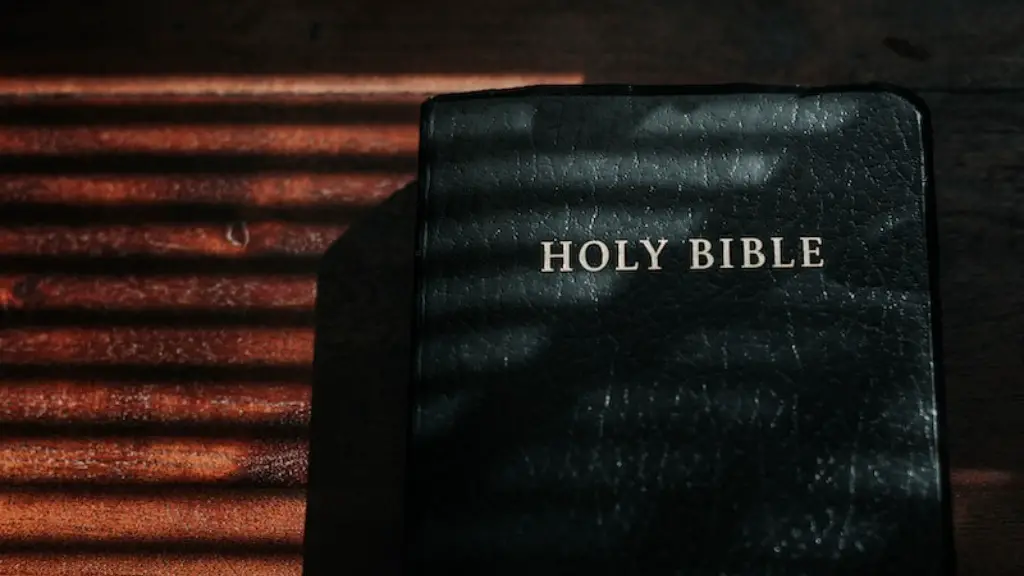Biblical authenticity is a hotly debated topic. Many people are unsure if the texts of the Bible have been changed or tampered with over the years. The accepted answer to this question is a resounding ‘no’, and this article looks to examine closely all of the evidence pointing to the reliability of both the Old and New Testament Bible texts.
Past authors’ lack of time machines mean that they can only venture an educated guess regarding how accurately the Bible reflects its original form, but countless generations of manuscripts, narratives and archaeological discoveries have enabled us to draw the conclusions we have today. In order to get a good understanding of Bible authenticity, we must go back in time to answer questions such as who wrote the Bible, when and why.
The Old Testament was written by various prophets and scribes over a period of around 1,500 years between 1000 and 300BC, and its stories were originally transcribed as separate books and scrolls. The books were later collected, edited and unified into a single volume during the babylonian exile in the 6th century BC.
The New Testament on the other hand, was written by multiple authors, including the apostles Peter, John, James and Paul, over a period of 50 years in the 1st century AD. The individual books of the New Testament were similarly collected and collated until they were finally canonised into a single volume.
The scriptures have been passed down from generation to generation since then, and there are now numerous printed versions in every major language of the world. Such vast
numbers of Biblical copies have enabled modern Biblical scholars to compare texts and finally proclaim the Bible’s reliability.
In fact, textual archaeology has allowed scholars to cross-reference the Bible with hundreds of other ancient texts dating from the second century BC to the present day. This has allowed scholars to compare various manuscripts, reveal inconsistencies, and explain smaller variations in the text.
The sheer volume of manuscripts has proven not only that the Bible is unchanged, but that it is the most meticulously preserved book in the world too. The end result is that we can be confident that the modern Bible is mostly free of meaningful mistakes.
Biblical Archaeology
The Bible is one of the most heavily-researched books ever written and its archaeological accuracy has been authenticated and reinforced by countless excavations and discoveries. The Bible has such a wide geographical area with plenty of archaeological sites, that discoveries made from the ancient world in the form of Artifacts and other archeological finds have helped to prove many of the bible’s historical accounts to be true. It is through these excavations and findings that the true reliability and understanding of the bible is truly found.
Most of these artifacts are found within biblical sites, but there are other artifacts that have been found containing stories or accounts which back-up stories of the Bible such as the Moabite Stone which backs up the biblical account of wars between King Mesha and Jehoram, King of Israel.
The discoveries of ancient city ruins such as the ruins of Jericho and the stone tablets of Gilgamesh have given humans a tangible experience and opportunity to both revisit and experience life in the time of the Bible. Moreover, there are many other finds that have increased our knowledge of the Old Testament In particular from the period of the 1st century AD such as the Dead Sea Scrolls and the Nag Hammadi Library.
Scientific Discoveries
Scientific discoveries oftentimes challenge what is said in the Bible and can even some times appear to contradict it. However, the Bible is so ancient and the science on which it is based so extensive, that at the root of many modern scientific theories are some of the earliest accounts found in the Bible. The Bible contains descriptions and events from thousands of years before the dawn of modern science and technology, but much of what is described in the text is extremely accurate.
The inclusion of scientific and medical knowledge within the bible is a testament to the ancient authors and their accuracy in noting and recording the world around them. This increases the trustworthiness and authority of the bible by showing that its authors were capable of accurately depicting and implanting scientific phenomena and techniques within the text.
Moreover, the Bible’s passages provide comprehensive insights into the life of Christ, his ministry and his death. This has enabled us to piece together the life and times of the historical Jesus, and gain a greater understanding of his life and how it is applicable to our lives today. The biblical authors were surprisingly accurate in noting down, and recording Jesus’s life.
Legacy of Ancient Texts
Ancient manuscripts are invaluable for determining the reliability of the Bible. The Nag Hammadi Library, for example, is a collection of ancient texts written in Coptic, dating back to the fourth century AD. These texts contain Christian narratives and provide evidence of how accurately the New Testament and its books were preserved.
The ancient Dead Sea Scrolls, on the other hand, have proven that the Old Testament books were also preserved over time. The scrolls date back to the time of Jesus, and they are some of the oldest Jewish religious manuscripts ever found. They contain prophecy, stories, law and psalms, and they provide functional proof of the Bible’s reliability.
Finally, there is the Masoretic Text. It is a collection of ancient texts that date back to around the eighth century AD. These texts are the Hebrew bible, and they contain the oldest known text of the Old Testament. Comparing these ancient manuscripts with modern texts has enabled scholars to check for errors, and reveal the authenticity of the Bible.
Archaeological Evidence
Archaeological discoveries such as the bullae from the Davidic Monarchy, the Shelemiah Bulla, the Shilonite Bulla, and the Yirmeyahu Bulla are amongst the hundreds of artifacts from the ancient world that have been discovered, enabling us to receive greater assurance of the authors of the bible and the stories within the Bible.
These bullae are clay seals carved with ancient writing and images which when examined further can affirm the existence of biblical characters. These seals– in conjunction with inscriptions such as the Tel Dan Inscription or the Moabite Stone – provide us with compelling archaeological evidence to help us corroborate and authenticate the Bible and the many stories within it.
Conclusion
To summarise, Bible authenticity is one of the most widely discussed issues at the present time, but with the help of textual archaeology, manuscript comparison, scientific findings and archaeological evidence, it can be confidently concluded that religious texts today are almost entirely unchanged from the original versions. The Bible is the most meticulously preserved text in the world, and its accounts have been proven to be accurate and reliable.




